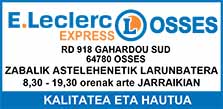Basque sites are also present on the Lower North Shore of Quebec. The Basque occupation of the Lower North Shore was part of the focus for the St. Lawrence Gateways Project run by Dr. William Fitzhugh of the Arctic Studies Centre, Smithsonian Institution. There are also 11 Basque sites recorded on the Island of Newfoundland. The Island sites seem to differ from those in Quebec and Labrador because they seem to have been fishing rather than whaling and they are dated later than those in Quebec and Labrador (Barkham 1989).
Of those 11 recorded sites they are either on the west coast, including the Northern Peninsula, or the south coast. Starting in the east, there are two sites in the Placentia area with Basque evidence, the first being Fort Louis. While the archaeological evidence for a Basque presence is slim here, limited to just red roofing tiles, there is documentary evidence stating that the Basque were using Placentia as a fishing base.
The second Placentia site that has Basque material culture is actually the graveyard of St. Luke’s Anglican Church. The cemetery has several very old headstones; three in particular were collected and stored in the church in the late 19th or early 20th century. They are now in the O’Reilly House Museum in Placentia. The headstones are inscribed with Basque text and date to the 17th century. The text is ‘…all pure Basque with the exception of one word which is French…’, according to the Rt. Rev. Bishop Howley (PDF). According to Bishop Howley, one of the stones reads:
” Here lies dead (or having died)
(on) The first of May 1676
John De Sale Ce—ana
The Son (or heir) of (the House)
of Sweetest Odour.”
In 1971, there was an attempt to locate the foundation of the original 17th century church. Given the location of the burials it was thought the original church was somewhere near St. Luke’s Anglican Church.
Heading west from Placentia there is a shipwreck in Placentia Bay that was found by a local dive club in the mid-1980s. The wreck consisted of a ballast pile, at least two cannons and some ceramics all visible on the ocean floor. Some of the ceramics suggested the wreck may have been of Basque origin.
On the west coast there is a considerable European occupation recorded in historic documentation for Ile Rouge off the west coast of the Port au Port Peninsula. A preliminary archaeological survey was conducted on the island in 1992. While the survey resulted in the discovery of a significant French occupation dating from the 18th-20th centuries including former house foundations, cemetery and garden enclosures, there was no definitive Basque material culture recovered. Despite this the island was known to have been used by the Basque. The island shows up as Isla de San Jorge on early maps and was ‘…used as a fishing station by Basques in the 16th and 17th centuries…’ (Jacques Whitford Environment Limited (JWEL) 1993:1). ‘The first reference to Ile Rouge in historic sources is a will written by a Spanish Basque ship’s captain for a dying member of his crew as they lay at anchorage by the island, then known as “San Jorge”. This event took place in 1632…’ (JWEL 1993:5).
In 1994, Fred Schwarz led an archaeological survey further north on the west coast, in the Bay of Islands which located several Basque or Basque related sites including Sword Point, Little Port 1 & 2 and Woods Island Harbour 1 & 2 (Schwarz 1994).
At Sword Point he found eight features including a low L-shaped mound, several circular depressions, several rectangular depressions and a subrectangular mound with a central depression (Schwarz 1994:22).
Little Port 1 contained a number of mounds, one is 1 metre high and roughly rectangular, measuring 100m2. Just behind this mound is another, smaller mound. Artifacts recovered from these features included a number of small sherds of
manganese-glazed redware, and one large piece of a small handled bowl with tin-enamel and cobalt blue interior decoration. Coarse earthernwares included a shoulder fragment of a jar with an unglazed body, fabric impressions on the exterior, and traces of tan glaze trickling down from the rim onto the interior and exterior surfaces. Two additional sherds have interior green glaze: one is from a thick-walled vessel with muddy brown-green interior glaze, and the other is similar, but thinner-walled, with a deep emerald interior glaze. This assemblage lacks the characteristic English wares of the 18th-19th centuries, and though it is only a survey collection, it is sufficient to indicate that the site is distinctive, probably French or Basque, and probably dating ca. A.D.1600-1800 (Schwarz 1994: 19-20).
Little Port 2 consisted of a linear arrangement of small, rocky mounds measuring 20m x 10m in all, rising from a somewhat boggy field. During testing Schwarz recovered many brick fragments, some sherds of an unidentified burnt grey stoneware, and also a number of nails and a large, twisted-shank fishhook. The assemblage Schwarz collected suggests a 19th-century occupation, though the artifacts reported by local residents suggest earlier material (A.D. 1600- 1800) (Schwarz 1994:20).
The artifacts collected from Woods Island Harbour 1 & 2 suggest both sites were made up of 19th or 20th century occupations. However, both are listed as having a possible Basque component because Woods Island Harbour is referred to as a 17th century Basque fishing station in documents and on maps as referenced in Barkham 1989.
The final area of the Island of Newfoundland with a recorded Basque site is further up the west coast on the Northern Peninsula on Old Ferolle Island. The island has been used as a fishing station from the Basque period of the late 16th century until the present day. In June, 1993, at the request of Thomson Heritage Consultants, Jacques Whitford Environment Limited conducted a preliminary archaeological survey of the island and undertook a program of informal interviews with local residents. The survey resulted in the discovery of structures found on and near the drying beaches on the island. The structures have been interpreted as pathways, building foundations, ovens, fish storage areas, wharf foundations and gardens, all probably related to the 18th century fishery. Hunting blinds were also found, probably dating to the 19th and 20th centuries. Three tent rings at the site also suggest a brief Inuit occupation, perhaps during the 18th century. It is evident from analysis of the artifact sample collected that the assemblage includes 18th century material, some of which was from the French Basque region and certainly from Normandy, and some 19th century material from England. While no definitive Basque features were found the site may contain a Basque occupation based documents and on maps as referenced in Barkham 1989.
While the physical archaeological evidence of the Basque occupation on the island of Newfoundland is scant; the documentary evidence is certainly present. A read through Selma Barkham’s book The Basque Coast of Newfoundlandcertainly attests to their presence. Perhaps there needs to be a more intensive search for the Basque occupation of Newfoundland.
-Barkham, Selma
1989 The Basque Coast of Newfoundland.
-Jacques Whitford Environment Limited
1993 Preliminary Archaeological Survey of Old Ferolle Island, St. Barbe District, Newfoundland.
-1993 Report on a Preliminary Archaeological Survey of Ile Rouge, Port au Port Peninsula, Newfoundland.
-Schwarz, Fred
1994 Archaeological Investigations in the Bay of Islands, Western Newfoundland September October 1994.



 Send to a friend
Send to a friend Add comment
Add comment








